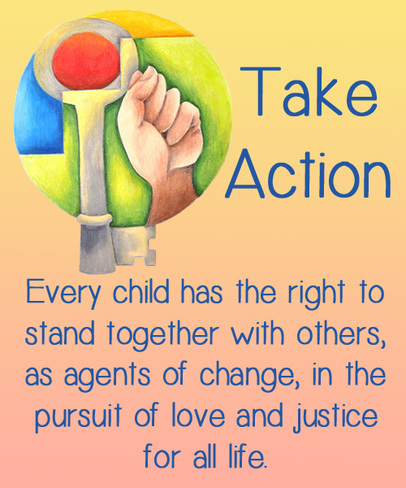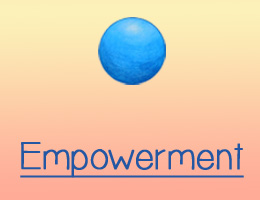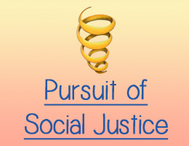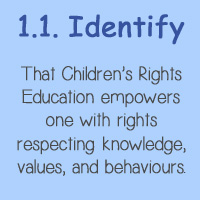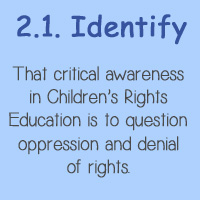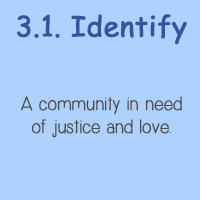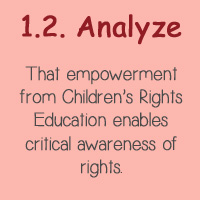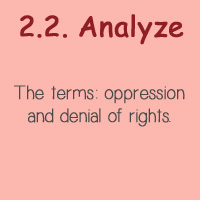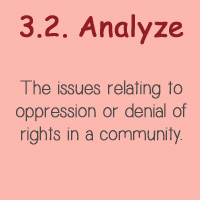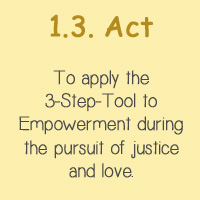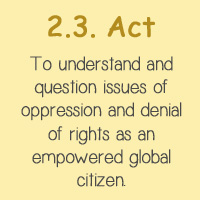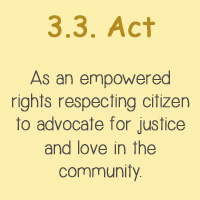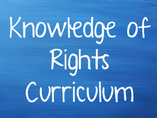Empowerment Cooperation Social Justice
Take Action Sub-Unit Topics
Convention Articles that Relate to this Right
Article 12
1. States Parties shall assure to the child who is capable of forming his or her own views the right to express those views freely in all matters affecting the child, the views of the child being given due weight in accordance with the age and maturity of the child.
2. For this purpose, the child shall in particular be provided the opportunity to be heard in any judicial and administrative proceedings affecting the child, either directly, or through a representative or an appropriate body, in a manner consistent with the procedural rules of national law.
Article 13
1. The child shall have the right to freedom of expression; this right shall include freedom to seek, receive and impart information and ideas of all kinds, regardless of frontiers, either orally, in writing or in print, in the form of art, or through any other media of the child's choice.
2. The exercise of this right may be subject to certain restrictions, but these shall only be such as are provided by law and are necessary:
(a) For respect of the rights or reputations of others; or
(b) For the protection of national security or of public order (ordre public), or of public health or morals.
Article 14
1. States Parties shall respect the right of the child to freedom of thought, conscience and religion.
2. States parties shall respect the rights and duties of the parents and, when applicable, legal guardians, to provide direction to the child in the exercise of his or her right in a manner consistent with the evolving capacities of the child.
3. Freedom to manifest one's religion or beliefs may be subject only to such limitations as are prescribed by law and are necessary to protect public safety, order, health or morals, or the fundamental rights and freedoms of others.
Article 15
1. States Parties recognize the rights of the child to freedom of association and to freedom of peaceful assembly.
2. No restrictions may be placed on the exercise of these rights other than those imposed in conformity with the law and which are necessary in a democratic society in the interests of national security or public safety, public order (ordre public), the protection of public health or morals or the protection of the rights and freedoms of others.
Article 42
States Parties undertake to make the principles and provisions of the Convention widely known, by appropriate and active means, to adults and children alike.
1. States Parties shall assure to the child who is capable of forming his or her own views the right to express those views freely in all matters affecting the child, the views of the child being given due weight in accordance with the age and maturity of the child.
2. For this purpose, the child shall in particular be provided the opportunity to be heard in any judicial and administrative proceedings affecting the child, either directly, or through a representative or an appropriate body, in a manner consistent with the procedural rules of national law.
Article 13
1. The child shall have the right to freedom of expression; this right shall include freedom to seek, receive and impart information and ideas of all kinds, regardless of frontiers, either orally, in writing or in print, in the form of art, or through any other media of the child's choice.
2. The exercise of this right may be subject to certain restrictions, but these shall only be such as are provided by law and are necessary:
(a) For respect of the rights or reputations of others; or
(b) For the protection of national security or of public order (ordre public), or of public health or morals.
Article 14
1. States Parties shall respect the right of the child to freedom of thought, conscience and religion.
2. States parties shall respect the rights and duties of the parents and, when applicable, legal guardians, to provide direction to the child in the exercise of his or her right in a manner consistent with the evolving capacities of the child.
3. Freedom to manifest one's religion or beliefs may be subject only to such limitations as are prescribed by law and are necessary to protect public safety, order, health or morals, or the fundamental rights and freedoms of others.
Article 15
1. States Parties recognize the rights of the child to freedom of association and to freedom of peaceful assembly.
2. No restrictions may be placed on the exercise of these rights other than those imposed in conformity with the law and which are necessary in a democratic society in the interests of national security or public safety, public order (ordre public), the protection of public health or morals or the protection of the rights and freedoms of others.
Article 42
States Parties undertake to make the principles and provisions of the Convention widely known, by appropriate and active means, to adults and children alike.
Unit References and Resources
- Amnesty International & HREA - Human Rights: Resources for Educators - Human Rights Education as basic as Reading, Writing, and Arithmetic
- Child Empowerment International.
- Free the Children - Take Action Camp.
- IUS - Definitions of Critical Thinking.
- Kids Can Make a Difference - What Kids Can Do.
- Me to We.
- Morrell, Ernest. (2008). Critical literacy and urban youth. Pedagogies of access, dissent, and liberation. Retrieved from: http://www.biblioteca.unlpam.edu.ar/pubpdf/anuario_fch/n09a26basabe.pdf.
- Ontario Ministry of Education - Capacity Building Series: Critical Literacy.
- Shor, Ira. (1997). What is Critical Literacy? Journal for Pedagogy, Pluralism & Practice. Retrieved from: http://newhavenleon.org/yahoo_site_admin/assets/docs/OutreachWhat_is_critical_literacy_-_shor.13071914.pdf.
- TedXKids@BC - Power in Me.
- UNICEF - Advocacy: People's Power and Participation Guide - Important Concepts for Social Justice Advocacy
|
What is Critical Thinking?
It is an intellectual process to:
|
|

